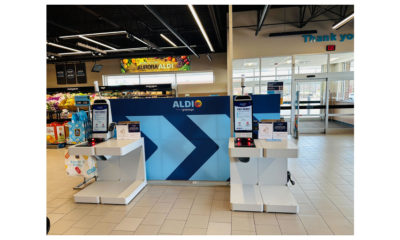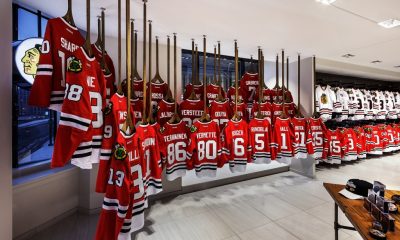The new Villager's Hardware stores are warm, bright, friendly and inviting, with their soft green-and-beige palette, tile floors and wide aisles. They're clearly intended to be welcoming to women, and comfortable to anyone who needs to hang a picture rather than sheetrock.
In fact, they harken back to yesterday's friendly corner hardware stores, a decisive retreat from today's industrial warehouse-type superstores — you know, like Home Depot.
But wait! Villager's Hardware is, in fact, from that very same retailer that first gave us those industrial warehouse-type superstores.
So, naturally, Home Depot would want to disassociate its core “warehouse” name from this new “corner hardware store” concept, to eliminate consumer confusion and crossed wires.
Well, no! Actually, the “Home Depot” name is clearly featured on the storefront. It's also there on the company's upscale Home Depot Expo Design Centers, which feature model bathrooms and personal decorating services rather than power drills and elbow joints. And it's on the all-flooring specialty store in Plano, Texas, called The Home Depot Floor Store.
Advertisement
Why is Home Depot not concerned about confusing shoppers with stores that are certainly about “home” but are in no way “depots”? Because it sees more benefit from trading on its well established brand equity.
Brand equity for hardware stores? Sure. Think of the turf war being waged in much of the U.S. between Home Depot and Lowe's. A hammer is a hammer. But the ambience of both retailers'stores, the service component, the cleanliness and roominess — those are what make shoppers go one place or another. And that's the equity Home Depot is incorporating into its branded strategy with the softer, smaller, design-friendlier stores.
Sears is going after the same market, but with an entirely different strategy, with its Great Indoors stores. (Note: not Sears Great Indoors.) Sears seems to be deliberately burying the connection, running away from its brand. It evidently feels the Sears brand is lower-end full-line stores and commodity merchandise, which might hurt it in a higher-end design market.
Home Depot might have come to the same conclusion. But it realized, wisely, that its “brand” is not hammers and nails, but service, smart merchandising, well-laid-out stores and an enlightened approach to meeting shoppers'needs. And those qualities register, regardless of what you're selling.
How odd that Sears, which re-branded itself in the 90s by finding its softer side (it was one of the decade's great retail success stories), has now chosen to abandon that leverage. Maybe it thinks the brand is an albatross. That would be too bad. Shopping at Sears, after all, was once as cherished an American pastime as a trip to the corner hardware store.

 Photo Gallery1 week ago
Photo Gallery1 week ago
 Headlines1 week ago
Headlines1 week ago
 Headlines2 days ago
Headlines2 days ago
 Headlines1 week ago
Headlines1 week ago
 Headlines1 week ago
Headlines1 week ago
 Designer Dozen2 weeks ago
Designer Dozen2 weeks ago
 Designer Dozen6 days ago
Designer Dozen6 days ago
 Headlines1 week ago
Headlines1 week ago















